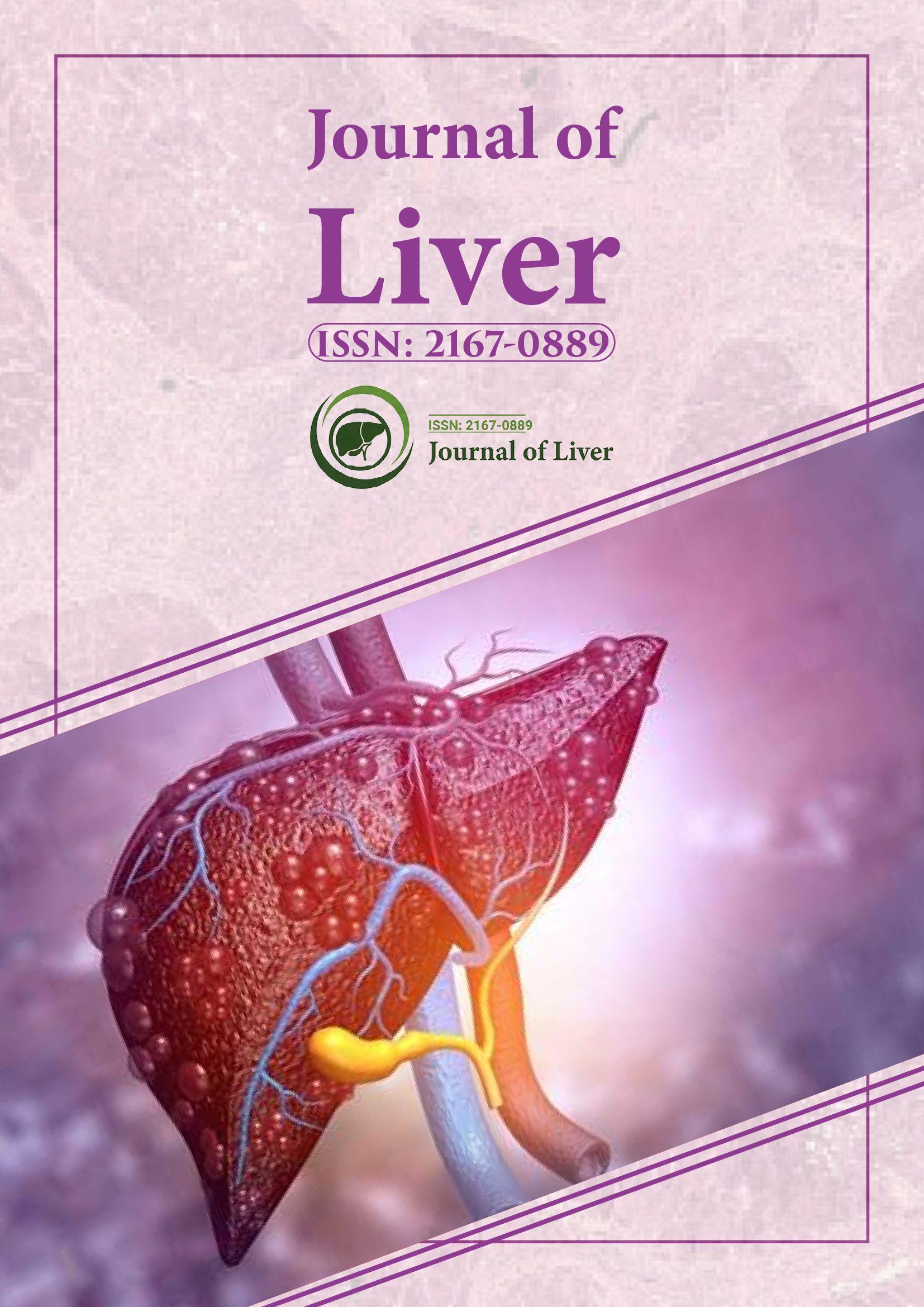Indexed In
- Open J Gate
- Genamics JournalSeek
- Academic Keys
- RefSeek
- Hamdard University
- EBSCO A-Z
- OCLC- WorldCat
- Publons
- Geneva Foundation for Medical Education and Research
- Google Scholar
Useful Links
Share This Page
Journal Flyer

Open Access Journals
- Agri and Aquaculture
- Biochemistry
- Bioinformatics & Systems Biology
- Business & Management
- Chemistry
- Clinical Sciences
- Engineering
- Food & Nutrition
- General Science
- Genetics & Molecular Biology
- Immunology & Microbiology
- Medical Sciences
- Neuroscience & Psychology
- Nursing & Health Care
- Pharmaceutical Sciences
Opinion - (2025) Volume 14, Issue 1
Liver Tumor Bleeding and the Impact of Surgical Resection
Arnault Rossi*Received: 25-Feb-2025, Manuscript No. JLR-25-29106; Editor assigned: 27-Feb-2025, Pre QC No. JLR-25-29106 (PQ); Reviewed: 13-Mar-2025, QC No. JLR-25-29106; Revised: 20-Mar-2025, Manuscript No. JLR-25-29106 (R); Published: 27-Mar-2025, DOI: 10.35248/2167-0889.25.14.246
Description
Hepatocellular adenoma represents an uncommon hepatic neoplasm, typically diagnosed in women aged between 20 and 40. Although generally considered benign, a subset may undergo bleeding or, less frequently, malignant transformation. Hemorrhage is one of the most serious complications and can present either as spontaneous intratumoral bleeding or rupture into the peritoneal cavity.
Management of haemorrhagic HCA has evolved over the years, with advances in imaging, interventional radiology and surgical techniques. Resection remains a definitive treatment approach in many cases, especially when the lesion is symptomatic or shows aggressive behavior. Assessing surgical outcomes helps inform treatment protocols and guide patient counseling.
Presentation and diagnosis
Patients with haemorrhagic HCA may present with acute abdominal pain, hemodynamic instability, or signs of internal bleeding. In some cases, bleeding may be detected incidentally during routine imaging. Contrast-enhanced CT or MRI is typically used to confirm hemorrhage and assess lesion characteristics.
Imaging can reveal hypervascular tumors with signs of rupture or internal hemorrhage. MRI, in particular, offers better characterization of subtypes, which may influence treatment planning. Laboratory findings such as a drop in hemoglobin, elevated liver enzymes, or abnormal coagulation profiles may accompany the imaging results.
Surgical approaches
Liver resection can be performed through open or minimally invasive techniques. The choice depends on tumor location, size, extent of bleeding and surgeon experience. Segmentectomy or lobectomy may be required for centrally located or larger lesions, while peripheral tumors can often be removed with wedge resections.
Intraoperative ultrasound is valuable for delineating tumor boundaries, especially when hemorrhage obscures normal anatomy. Control of bleeding, both from the liver parenchyma and adjacent structures, is a critical component of successful surgery.
Outcomes of liver resection
Surgical success rates: High success rates are reported in elective and semi-urgent settings when preoperative stabilization is achieved.
Morbidity: Postoperative complications may include bile leak, intra-abdominal abscess and transient liver dysfunction. These are typically manageable with supportive care.
Mortality: Operative mortality is low in experienced centers. Emergency procedures carry a slightly higher risk compared to planned resections.
Role of embolization
Transarterial Embolization (TAE) is sometimes used before surgery to control bleeding and reduce the size of the tumor. It may also serve as a definitive treatment in patients unfit for surgery or with small-volume hemorrhage.
Embolization can stabilize patients in the acute phase and allow for planned surgery under better conditions. However, it carries its own risks such as post-embolization syndrome, which includes pain, fever and liver dysfunction.
Postoperative follow-up
Follow-up care involves imaging at defined intervals to assess for residual lesions or recurrence. Hormonal status should be reviewed and discontinuation of estrogen-containing contraceptives is often advised. Genetic counseling may be considered in patients with multiple adenomas or familial risk.
Routine liver function tests and physical assessments form part of continued care. In patients with underlying metabolic disorders, lifestyle interventions are encouraged to reduce hepatic stress and support liver regeneration.
Special considerations
Pregnancy: Women of childbearing age require special consideration. HCAs may increase in size during pregnancy due to hormonal changes and hemorrhage risk may rise. Surgical resection before conception is often recommended when tumors are large or have shown prior bleeding.
Multiple adenomas: Patients with multiple HCAs may require a more individualized strategy. In such cases, treatment may include selective resection of the largest or most symptomatic lesion, along with medical and imaging follow-up.
Genetic conditions: Rare conditions like glycogen storage diseases may predispose patients to HCA. In these cases, management should be coordinated with a metabolic specialist.
Liver resection for haemorrhagic hepatocellular adenoma provides effective control of bleeding and prevents recurrence in most cases. When performed in stable patients at experienced centers, it is associated with favorable surgical and long-term outcomes. Accurate diagnosis, timely intervention and careful postoperative monitoring are essential for achieving optimal results. As knowledge of HCA subtypes and risk factors continues to improve, individualized approaches based on tumor behavior and patient characteristics will support safer and more effective care.
Citation: Rossi A (2025). Liver Tumor Bleeding and the Impact of Surgical Resection. J Liver. 14:246.
Copyright: © 2025 Rossi A. This is an open-access article distributed under the terms of the Creative Commons Attribution License, which permits unrestricted use, distribution, and reproduction in any medium, provided the original author and source are credited.
